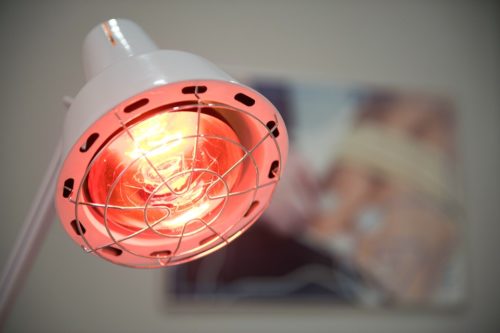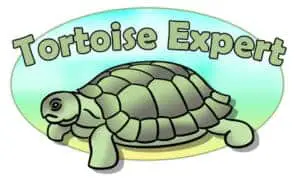
If you’re just getting started in your pursuit of tortoise husbandry excellence you probably have a whole ton of questions going around in your head, one of which is likely to be; what does my tortoise require to regulate his or her temperature, and what do I need to do to facilitate this?
There’s a good chance you’ll be keeping your tortoise in a part of the world where the climate is very different to where they would be found naturally. Here in the UK for example there are no indigenous tortoises, therefore any tortoise you own will, by definition, be living in a climate they aren’t adapted to.

However as it turns out, in many cases tortoises are pretty good at adapting to an alien climate, and many adult specimens are able to live quite comfortably outdoors in temperatures that fall short of those found in their natural environment without an artificial heat source.
Thus provided they’re healthy and contained within an appropriate outdoor enclosure that allows them to stay dry and out of the elements when they choose, mature tortoises can certainly survive without an external heat source.
The only time you would need to provide an additional source of heat to a mature tortoise would be if you were choosing to ‘over winter’ them, which essentially means bringing them in from the cold during winter, rather than allowing them to hibernate.
The real issue with heating arises with juvenile (baby) tortoises. Their underdeveloped bodies need a lot more intervention to stay healthy, and heaving a source of heat in their enclosure is imperative throughout each and every day of the first 3-5 years of their life. Again, this excludes any hibernation periods.
To check out our recommeded picks for heat lamps and other products, take a look at our recommended tortoise care products.
How Long Can a Baby Tortoise go Without Heat and UVB?
First of all let’s be clear what we mean when we say ‘heat’. Whilst a baby tortoise might very well survive without a heat lamp, that will only be because he has another source of heat instead.
A baby tortoise cannot survive more than a few weeks without a source of heat in his vivarium/tortoise table. Heat is vital for aiding with metabolic processes including the digestion of food, so no heat will lead to malnourishment among other things.
Heat lamps are the most widely used source of heat because they’re cheap and cheerful, and, because they emit light as well as heat they provide encouragement for the tortoise to bask underneath them, just as though they were in the wild basking in the sun.
Now as I say, heat lamps aren’t you’re only option for providing you baby tortoise with the heat he needs. I don’t personally have any experience of using them but there are two widely used alternatives to heat lamps:
- Ceramic Heat Plates
- Heat Mats
Ceramic heat plates usually screw into the same light bulb socket that a heat bulb goes into, so they’re an easy switch if you want to try one out. These give off plenty of heat so will work as a substitute for the heat provided by a heat bulb.
Heat mats on the other hand, sit on the floor of the enclosure, and tend to emit a gentler amount of heat, so are better suited to supplementing the heat provided by either a heat bulb or ceramic plate rather than as a full alternative.
As I mentioned above heat bulbs provide the closest approximation to nature in terms of giving odd both heat and light. However the light they give off isn’t the light a tortoise requires in order to stay healthy. That typically comes from another source of light entirely.
If you’re looking to kit your tortoise table or vivarium out with the right heating equipment then I recommend the lighting products sold over at CBReptile.com. These guys aren’t just another backstreet petshop trying to make a quick buck from unsuspecting tortoise newbies. They’re a family run business who are truly passionate about reptiles, and have a qualified biologist among their team. This means that they only select products they know are safe for the animals they breed and sell, and given that they’re among the most prolific sellers of reptiles in the US, I find that pretty reassuring!
UV Light
Much of the confusion around tortoise lighting comes from the fact that whilst heat doesn’t necessarily need to comes from a light bulb, UV light is an essential too, and that does need to come from a light bulb.
UV bulbs are very different beasts from heat lamps, giving off a dull blue hue rather than the sunny glow of a heat lamp. None the less without a decent UV bulb shining down on them all year round a baby tortoise would get very unhealthy indeed. UV light is essential, particularly for the healthy growth and development of a tortoise’s bones and shell, and without it all kinds of ailments can arise.
If your UV bulb blows (which it will every 6 months to a year, trust me) then it’s ok to go a day or two without one whilst you get another one on order, or find the time to head to the pet shop, but I would still make a point of replacing it as quickly as possible.
A lack of UV isn’t as immediately life threatening as a lack of warmth, and indeed if your tortoise chooses to retreat into the covered space within their enclosure then they can willingly keep themselves out of the UV for extended periods of time should they wish to. Nonetheless it’s important to have the UV light ‘on offer’ at all times, ready to provide a dose of vital UV at every available opportunity.
How Long Should a Tortoise’s Heat and UV Lamps be on Throughout the day?
The goal when keeping your tortoise indoors is to try and simulate their natural outdoor habitat as closely as possible. As far as lighting goes you’ll want to get as close to a real ‘sun rise to sun set’ scenario as you can.
Now clearly unless you’re planning on setting up some kind of clever timer and dimmer system, you’re not really going to be able to able to replicate the gradual rise and fall of the sun, complete with the rise and fall in temperature and UV.
To this end I aim to provide midday sun levels of heat and UV for between 10 and 12 hours a day. Whilst this doesn’t offer any fluctuation in heat and UV, your tortoise always has the option to take in as much or little light as they desire.
To ensure maximum UV exposure I like to use a UVB strip light that spans the full length of my tortoise table, and maintaining a heat gradient is achieved by positioning a heat lamp at one end.
Crucially though, one of the main reasons for having an covered space for your tortoise to retreat is to allow them to retreat from heat, UV, or both should they wish. Again this replicates life in the wild, as a tortoise would make a burrow, or retreat under a rock, either to escape from predators or to escape the midday sun. This should always be positioned at the opposite end of the enclosure to the heat lamp.
Having the correct lighting set-up and a retreat space ensure that you tortoise has all the light your tortoise needs, but also enables them to get away from it when they want to.
How Long Does a Tortoise Need a Heat Lamp For?
The general rule for artificial heat is; as long as your tortoise is kept indoors, be they young or old, you will need to provide them with an artificial source of heat, and indeed UV.
So whether you’re keeping a one year old juvenile indoors all year, or you’re over wintering a more mature tortoise, heat and UV lights should form part of your set up.
Indeed, even if your tortoise is living in an outdoor enclosure you might still want to provide him or her with a heat source on colder days, especially if your garden receives little in the way of sunlight (as in my case unfortunately)
A cost effective method can be to create a small ‘greenhouse’ as part of the indoor portion of their enclosure. This will trap the heat from the sun, and can be made even more effective if lined with bubble wrap (the bigger the bubbles the better)
So to summarize, you’ll never want to abandon providing heat for your tortoise entirely, and need to continually supplement it throughout their lives when mother nature isn’t up to the job.
Remember, in their waking state tortoises should be kept in an environment with a temperature gradient that ranges from between 15 to 20 degrees celsius at the cold end 32 to 38 degrees at the warm, heated end, whether by natural or artificial means. This gives the tortoise the freedom to pick a comfortable spot at whatever temperature he requires at any given moment.

